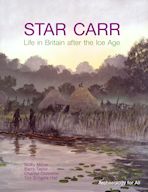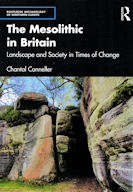The Mesolithic in Britain proposes a new division of the
Mesolithic period into four parts, each with its own distinct character.
The Mesolithic has previously been seen as timeless,
where little changed over thousands of years.
This new synthesis draws on advances in scientific dating
to understand the Mesolithic inhabitation of Britain as a historical process.
The period was, in fact, a time of profound change:
houses, monuments, middens, long-term use of sites and regions,
manipulation of the environment and
the symbolic deposition of human and animal remains
all emerged as significant practices in Britain for the first time.
The book describes the lives of the first pioneers in the Early Mesolithic;
the emergence of new modes of inhabitation in the Middle Mesolithic;
the regionally diverse settlement of the Late Mesolithic;
and the radical changes of the final millennium of the period.
The first synthesis of Mesolithic Britain since 1932,
it takes both a chronological and a regional approach.
This book will serve as an essential text for anyone studying the period:
undergraduate and graduate students, specialists in the field
and community archaeology groups.

